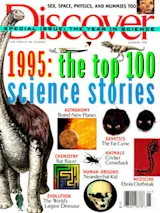When microbiologist Raúl Cano announced in May that he had revived bacteria that were between 25 million and 40 million years old, he became the subject of intense public interest, even more intense scientific skepticism, and a Dave Barry column. (You wait, the humorist wrote. One of these nights, Dr. Cano’s germs are going to escape from their petri dishes and start creeping forward, zombie-like, with their little bacterial arms sticking straight out in front of them, and heaven help the laboratory security guard who stands in their way.)
Cano, who works at California Polytechnic State University in San Luis Obispo, found his ancient research subjects in the belly of a bee that long ago got stuck in the resin flowing from a tree in the Dominican Republic. When that resin hardened, it became amber. The bee died almost immediately, but inside its stomach lived a species of symbiotic bacterium ...














